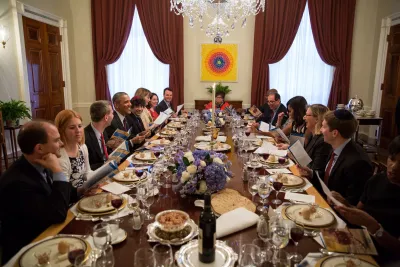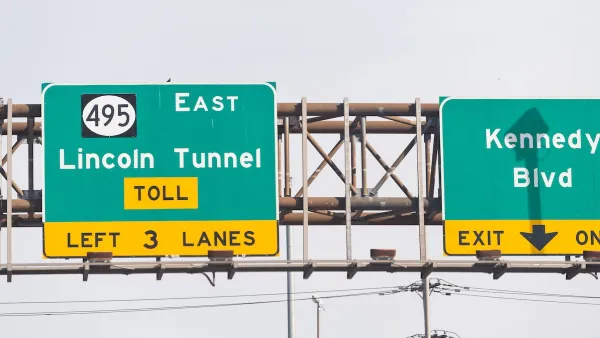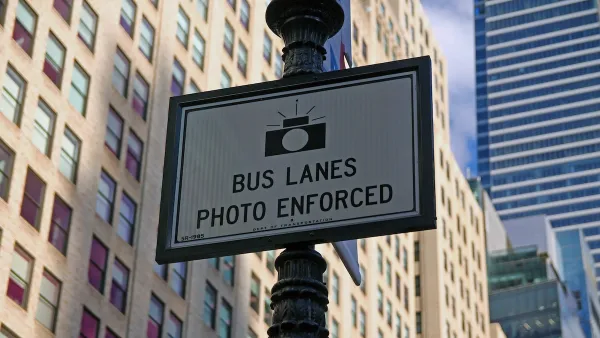Those of us who cherish cities have much to be grateful for (at least in some cities).

This weekend marks the beginning of the Jewish holiday of Passover, which in turn begins with a festive meal called The Seder. One of my favorite parts of the Seder is the song "Dayenu." The term "Dayenu" means "it would have been enough" or "it would have sufficed." In this song, participants sing or chant: "If God had done A but not B for us, it would have sufficed; if God had done B but not C for us, it would have sufficed" and so on. It seems to me that the song is designed to review the story of the Exodus from Egypt and related events, while instilling a sense of gratitude in listeners.
It seems to me that this song/poem could be adapted to urbanism—at least in relatively successful cities such as New York. One might start off by saying:
"If New York had the magnificent building stock of the 1920s, but had not added parks and playgrounds, it would have been enough.
If the city had added parks and playgrounds in the 1930s, but Robert Moses's plans to run expressways through the city had not been stopped, it would have been enough.
If Jane Jacobs had stopped Moses's plans to run expressways through the city in the 1960s, it would have been enough." But of course, the city suffered quite a bit from sprawl and poverty and crime in the 1960s and the 1970s. So I am a bit more grateful for the reforms of the 1970s and 1980s. So I might add:
"If the city had been financially stabilized in the 1970s but not saved the subway, it would have been enough;
If the city had had the subway retrofitted, it would have been enough."
Financial stability and a functional subway in turn made the city more desirable to immigrants (both from the rest of the world and to the rest of the United States). But even though the city was growing again in the 1980s, one thing was missing: safety. Under Mayors Giuliani and Bloomberg, this problem was solved. When Giuliani took office in 1993, New York was more dangerous than many cities (though, contrary to popular conventional wisdom, some cities were more dangerous even then). Today, it is, I think, the safest large city in the United States.*
So I would add: "If the city had become safe, it would have been enough."
Once crime was under control, the city began to tackle quality of life issues such as transportation. Under Mayor Bloomberg, the city began to add bike lanes and pedestrian plazas to make more of the city's streets desirable places to walk and bike.
So I would add: "If the city had added bike lanes but not pedestrian plazas, it would have been enough; If the city had added pedestrian plazas, it would have been enough."
But just as the ancient Hebrews and their modern descendants have suffered all kinds of post-liberation setbacks and problems, New York and other prosperous cities still have significant problems. The city’s popularity means higher demand for housing and higher rents, homelessness is rampant, and the subway needs a new round of retrofitting. I hope that in a few decades, other writers will be able to add additional lines of Dayenu to this blog post- and I also hope that you can add a few lines of Dayenu for your own city!
*For city crime rates go to city-data.com. The only major cities with lower crime rates are cities like San Jose that annexed huge amounts of suburbia. But among cities trapped within their 1950 boundaries, I am pretty sure New York stands alone.

National Parks Layoffs Will Cause Communities to Lose Billions
Thousands of essential park workers were laid off this week, just before the busy spring break season.

Retro-silient?: America’s First “Eco-burb,” The Woodlands Turns 50
A master-planned community north of Houston offers lessons on green infrastructure and resilient design, but falls short of its founder’s lofty affordability and walkability goals.

Delivering for America Plan Will Downgrade Mail Service in at Least 49.5 Percent of Zip Codes
Republican and Democrat lawmakers criticize the plan for its disproportionate negative impact on rural communities.

Test News Post 1
This is a summary

Test News Headline 46
Test for the image on the front page.

Balancing Bombs and Butterflies: How the National Guard Protects a Rare Species
The National Guard at Fort Indiantown Gap uses GIS technology and land management strategies to balance military training with conservation efforts, ensuring the survival of the rare eastern regal fritillary butterfly.
Urban Design for Planners 1: Software Tools
This six-course series explores essential urban design concepts using open source software and equips planners with the tools they need to participate fully in the urban design process.
Planning for Universal Design
Learn the tools for implementing Universal Design in planning regulations.
EMC Planning Group, Inc.
Planetizen
Planetizen
Mpact (formerly Rail~Volution)
Great Falls Development Authority, Inc.
HUDs Office of Policy Development and Research
NYU Wagner Graduate School of Public Service






























